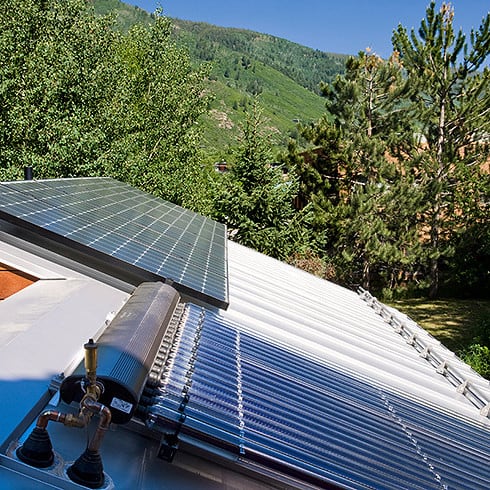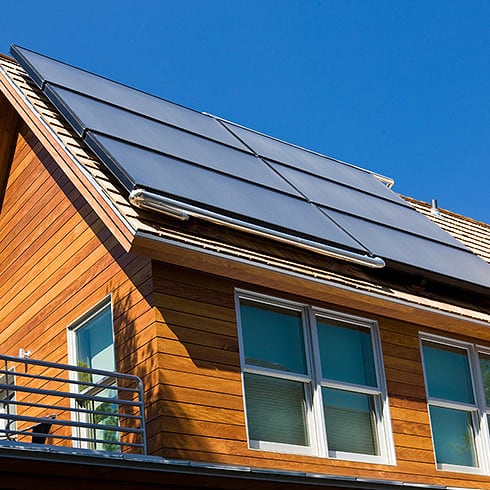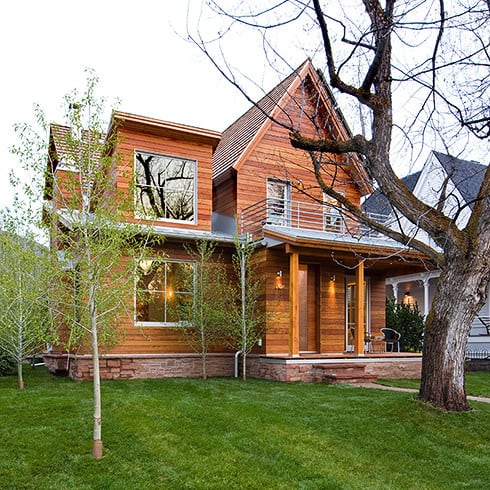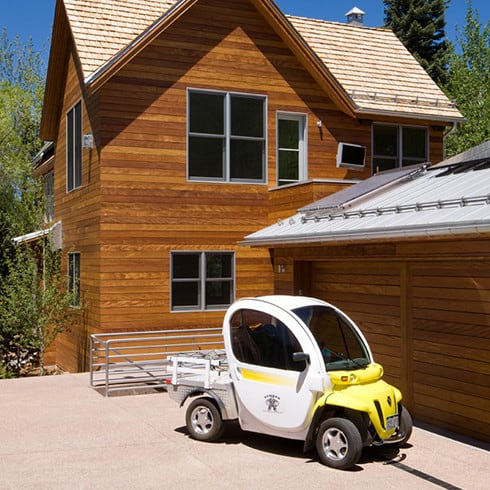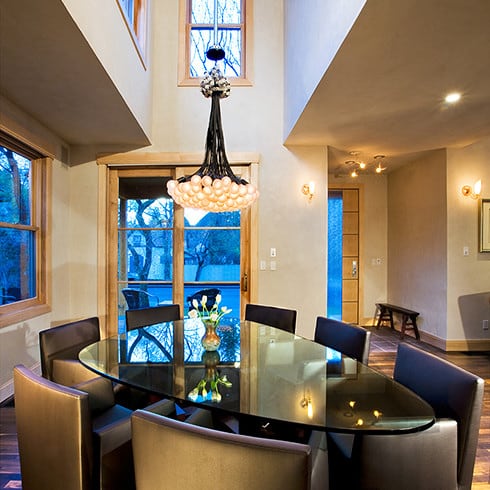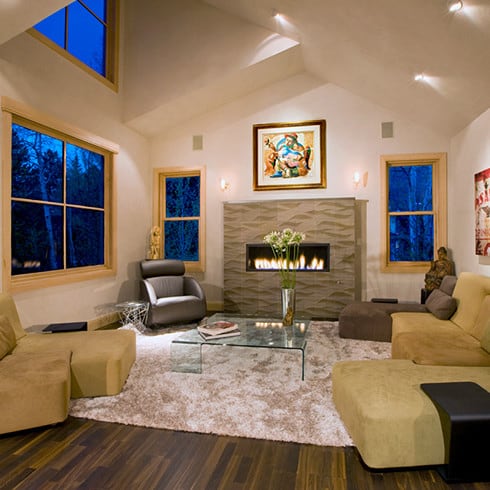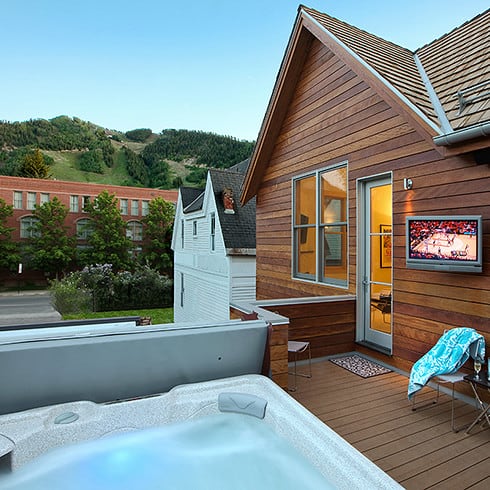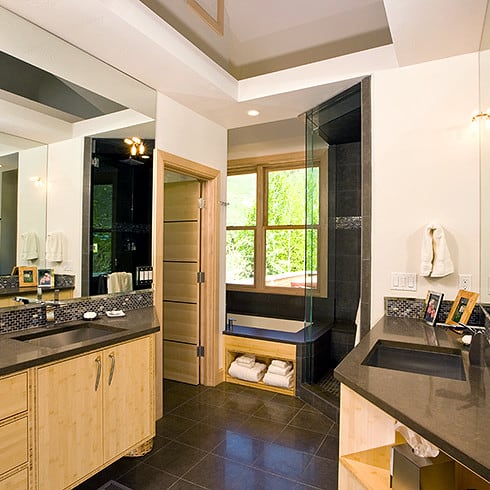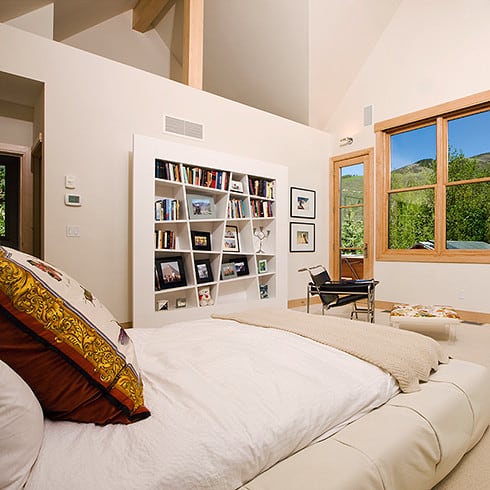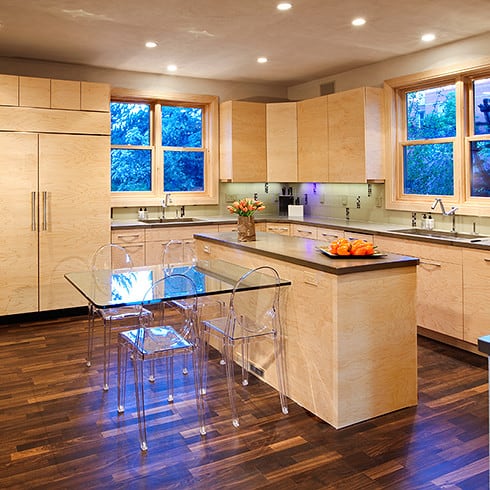That was one of the challenges that developer Tim Semrau faced when purchasing the “Blue Vic” property, as it’s known locally due to its color (since painted white), in downtown Aspen. Instead of adding square footage directly onto the existing structure, Tim opted to redevelop the property and move the “Blue Vic” roughly fifteen feet to a new foundation. This permitted him to create a second, new home on the remaining portion of the lot that became 204 North Monarch. Tim was resolute that the new home complement, not overwhelm, the original home while simultaneously providing a vivid example of Aspen’s architectural future and past. The home beautifully captures the character of the neighborhood while utilizing energy efficient systems and cutting-edge sustainable building materials.
Beyond NetZero in Aspen, Colorado
Is it possible for a modern and sustainable twenty-first-century home to coexist architecturally with a nineteenth century Queen Anne-style Victorian?

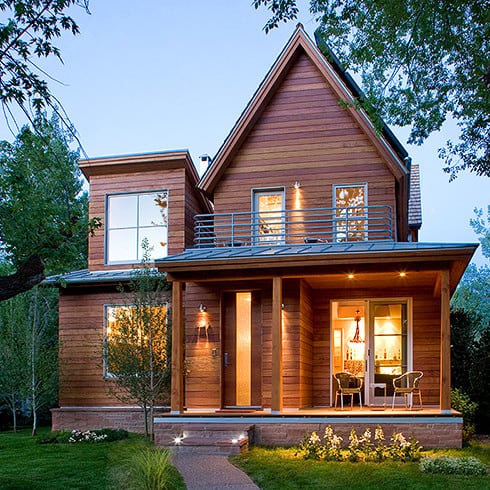
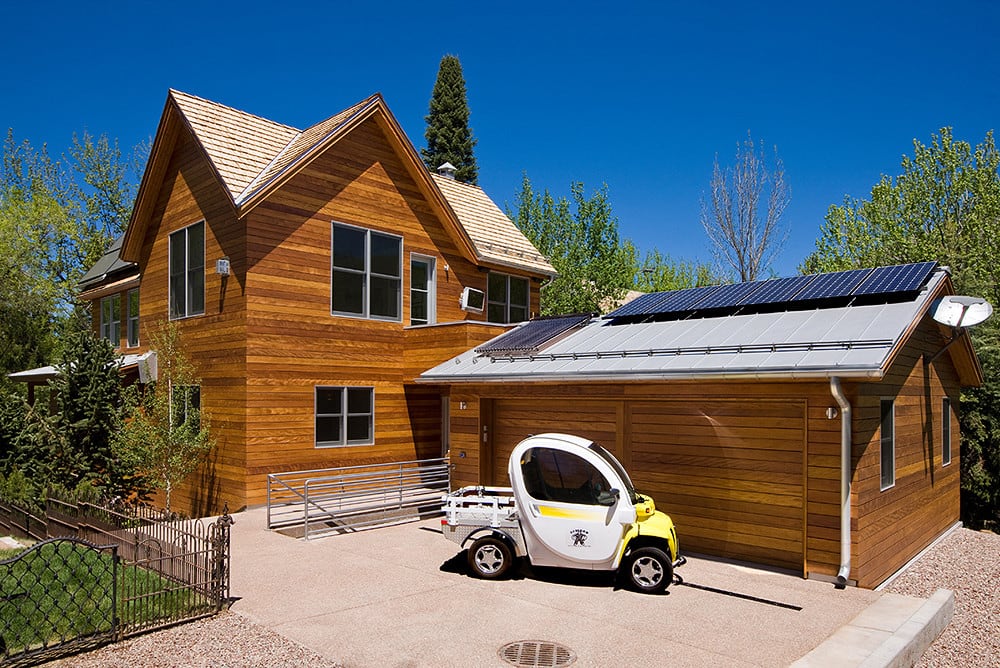
Type:
New residential construction
Location:
Aspen, Colorado
Total Square Footage:
3,700 square feet
Floor Covering:
Carbonized oak, slate and wool carpet
Energy:
Flate plate and evacuated tube solar collectors and photovoltaic system
Architect, Builder and Homeowner
Tim Semrau, SBD
Tim Semrau is a local developer, architect, and builder who also spent four years as an Aspen city council member. He is passionate in his promotion of green building and for smart, non-evasive redevelopment of property.
Semrau Building & Design (SBD) designed and built its first solar home in 1982 and has completed more than 40 homes in the Aspen area since that time. Over the years, SBD began to focus on going beyond the goal of Net Zero and instead creating a dwelling that actually produces more energy than it consumes.
“My goal for this project was to juxtapose old and new,” Semrau explains, “and to show that the two can coexist in harmony with one another. We skipped a century in the design and development of this home, and the end result is a project that honors the past and its historic neighbors, but also has a foot in the future and includes cutting-edge sustainable and technological features.”
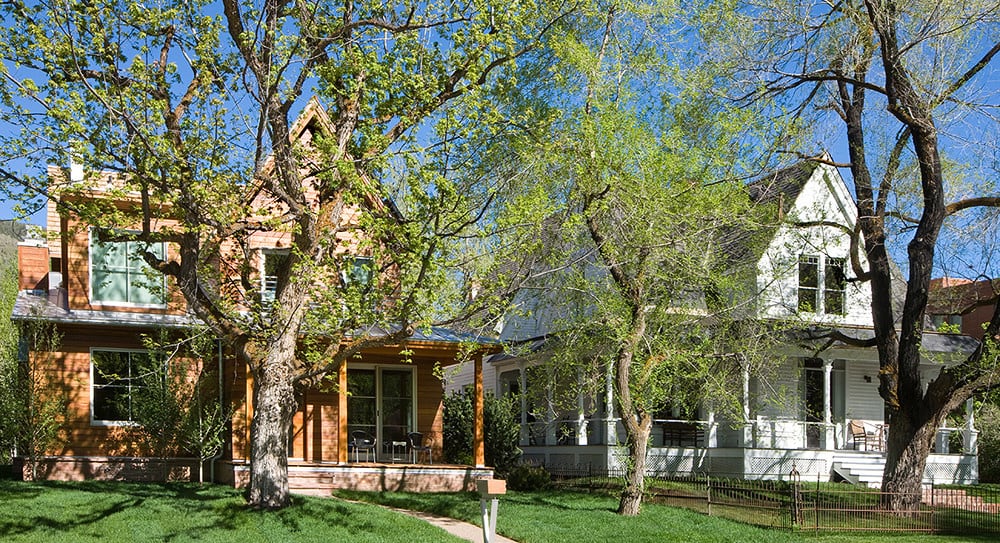
Not only did Tim have the challenge of designing a new home that would work with the preserved Victorian, he also wanted to address other important issues facing Aspen today. One of those issues included energy conservation. He accomplished this through the home’s extensive use of sustainable products and systems. Tim chooses to use radiant heat in the homes he builds because it is a much more pleasant and comfortable heat source that also provides a healthy and clean indoor air environment.
Tim states, “I prefer Warmboard because I believe in the efficiency of the system”. In fact, in this home the ultra efficient Warmboard radiant system reduces the supply temperature required for in floor heat by approximately 15º. The low mass, highly conductive panel improves the efficiency of heat transfer resulting in lower operating costs while eliminating cold spots. “This system runs on 115 degree water instead of the typical 130-135 degrees required by a Gypsum Concrete radiant system,” Tim explains.
Multiple solar systems efficiently heat the hot water used for the Warmboard radiant heat. A very large flat plate collector on the south roof and a high efficiency vacuum tube collector on the garage roof feed hot water into an exchanger in the house. The exchanger heats the water for the seven-zone Warmboard system, as well as domestic hot water and radiant snowmelt systems.
Tim says, “My Warmboard system operates seamlessly and is much more responsive to thermostat adjustments than other methods of radiant heating. Warmboard is one of those products that works all the way around; providing better heat, better energy efficiency, and is simple and easy to use.”
The roof snowmelt system utilizes Warmboard and a metal roof. “This combination is the most effective solution for potential roof problems in a cold climate”, states Tim. Snow that collects on the roof is easily melted away so there is never a heavy load on the roof. Tim also explains that using Warmboard in his system “has the added benefit of no unsightly parts sticking up from the roof.”
Another innovation used in the house is the extensive solar photovoltaic system that generates electricity that is fed back into the grid. Inside the garage a small all-electric car, perfect for use in the city of Aspen, indirectly runs on this electricity. The car uses 1KW of electricity to go 4 miles, and the photovoltaic system creates an ample amount of electricity on a summer day.
Other systems used in the home include automated solar shades to efficiently control heat gain/loss on major windows, real-time energy use monitoring to optimize system usage, and two recovery ventilators that provide healthy ventilation while conserving energy. Recycled glass tiles, environmentally sensitive concrete, and FSC certified woods are just a few of the sustainable materials used in the home.
The North Monarch home also boasts an impressive Home Energy Rating Score (HERS) of 42. A standard new home has a HERS rating of 100, meaning that this home uses 58% less energy than an average new home of the same size. Semrau predicts that the annual electric and heating bill combined will be $1887.
“In Aspen, we want to preserve the quaint and charming qualities of the past, and at the same time we are desperately craving the convenience of the future,” Semrau says. “That’s what this project is really about. It turns out that the future isn’t scary, it’s cool!”
Semrau Building & Design
Aspen office 970.925.6447 x1
California office 310.456.0642
tim [at] sbdgreen.com
Understanding Radiant Heating
Terry Alsberg, Founder & Inventor of Warmboard
In every issue of Radiant Architecture we seek to tell the stories of architecturally significant radiant projects, from the individual perspective of the key participants. This month’s project is unique because the client, architect and builder are the same person.
The design program that Tim Semrau set forth had two seemingly contradictory goals; to be reverent to the historic preservation while at the same time pushing the envelope of forward thinking through the use of environmentally responsible materials and state-of-the-art energy design.
“Net Zero” is increasingly taking hold in the best design firms around the world. It simply means creating architecture that produces as much energy as it consumes. In this instance, Tim took the concept beyond merely addressing energy usage within the building envelope and included snow melt, heating an outside hot tub and powering an electric vehicle. This design utilized solar thermal to heat water for radiant floor heating, snow melt, domestic water and the outdoor hot tub. A grid-tied solar photovoltaic system was chosen to meet electrical demand, while charging the battery-powered vehicle for local travel.
Radiant was an essential choice due to the steep roof lines of the new structure which were intended to evoke the roof lines of the historic Victorian sharing the lot. The tall cathedral ceilings under this roof ruled out the possibility of forced hot air or convective baseboard. Such systems concentrate hot air directly under the cold roof, wasting energy. Focusing the heat near the floor, and away from the ceiling, is a major factor in the energy savings of radiant floor heating.
Warmboard radiant subfloor products push efficiency further than other radiant options.
The top surface of Warmboard is a thick aluminum plate stamped to maximize its contact with the hydronic tubing, which carries heated water from the roof collectors. Because of this highly conductive assembly, lower water temperatures can be used, increasing overall efficiencies. Warmboard is so efficient that Tim also used it as roof sheathing to provide snow melt, which reduced roofing loading in the snow season. As a low mass system, Warmboard avoids the undershoot and overshoot typical of the out-dated, high mass slab systems that can waste energy and compromise comfort because their slow to response to heating needs.
As a dry, plywood-based panel, Tim’s choice of the carbonized oak flooring installed quite easily. And Warmboard’s high conductivity overcame the challenge of using wool carpets, which would have been out of the question with old school radiant technologies.
Responsible use of materials was an additional program goal. Warmboard uses plywood made to the stringent Oregon Forest Practices Act (FPA). The thick conductive aluminum surface on each panel contains a significant amount of recycled material. And, the aluminum is stamped using a beeswax based die lubricant, which is simply rinsed off with warm water.
This stylish and elegant home which, echoes the forms of its Victorian neighbor, is a model for what can be accomplished when we push the envelope of design through great systems and materials.
